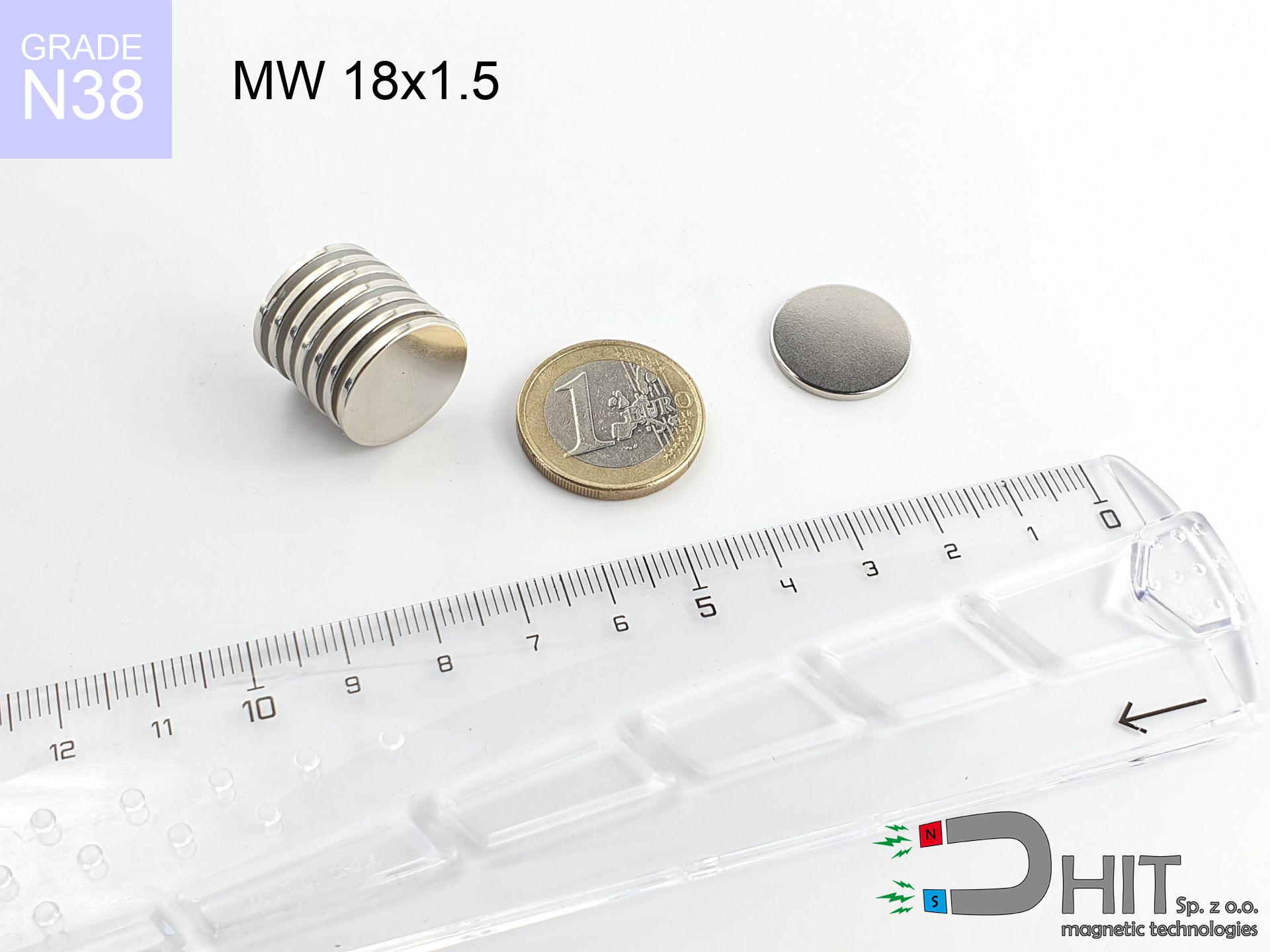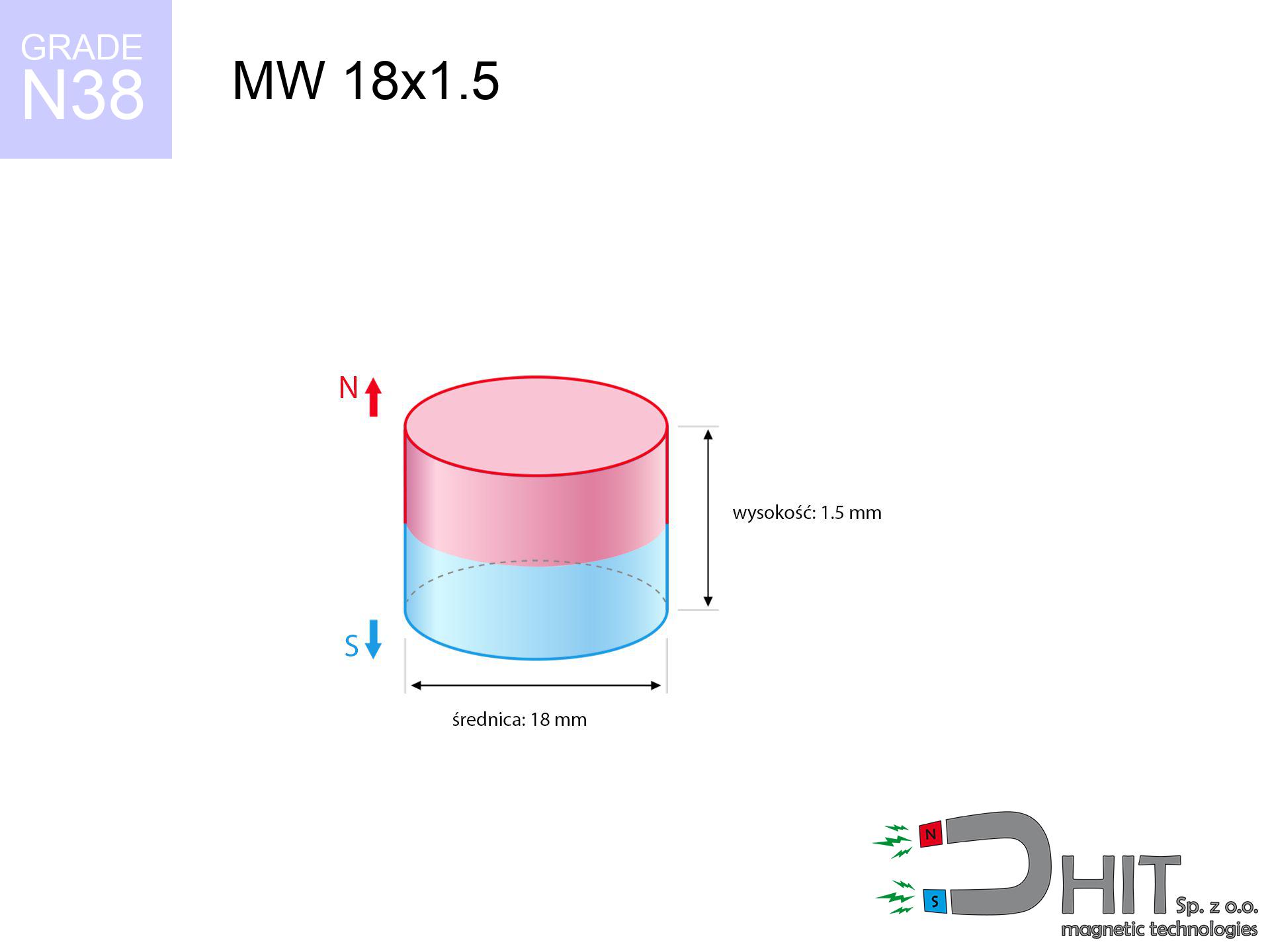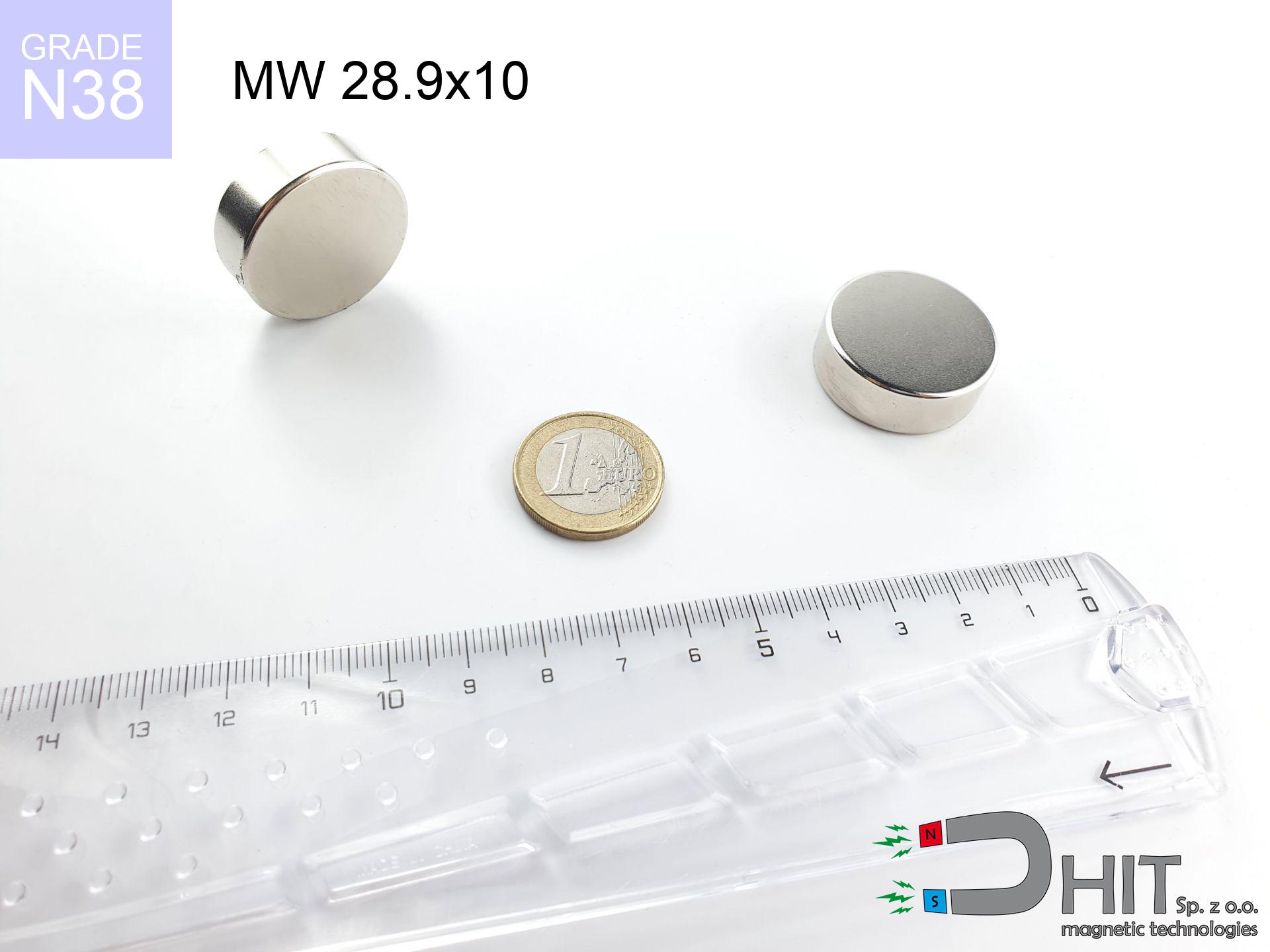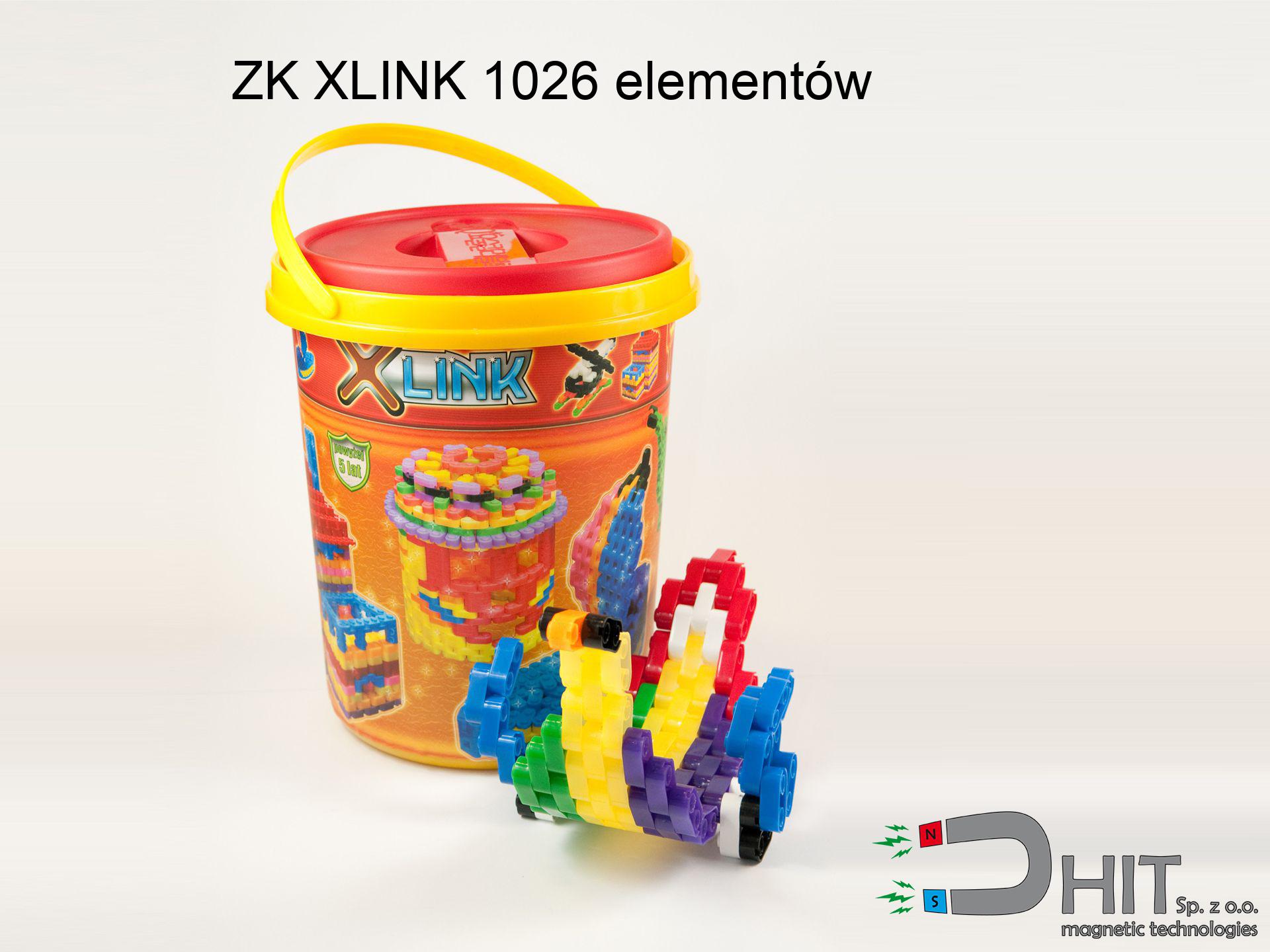MW 18x1.5 / N38 - neodymium magnet
cylindrical magnet
catalog number 010037
GTIN: 5906301810360
diameter Ø
18
mm [±0,1 mm]
height
1.5
mm [±0,1 mm]
magnetizing direction
↑ axial
capacity ~
1.49 kg / 14.61 N
magnetic induction ~
101.91 mT / 1,019 Gs
max. temperature
≤ 80
°C
catalog number 010037
GTIN: 5906301810360
diameter Ø
18 mm [±0,1 mm]
height
1.5 mm [±0,1 mm]
magnetizing direction
↑ axial
capacity ~
1.49 kg / 14.61 N
magnetic induction ~
101.91 mT / 1,019 Gs
max. temperature
≤ 80 °C
1.35 ZŁ gross price (including VAT) / pcs +
1.10 ZŁ net price + 23% VAT / pcs
bulk discounts:
need more quantity?Want a better price?
Call us tel: +48 22 499 98 98 or get in touch via contact form on the contact page. You can check the power and the shape of neodymium magnets in our power calculator magnetic calculator
Orders placed by 2:00 PM will be shipped on the same business day.
Specification: cylindrical magnet 18x1.5 / N38 ↑ axial
Magnetic properties of the material N38
Physical properties of sintered neodymium magnets Nd2Fe14B
Moreover, although neodymium is part of the strongest magnets, they are prone to corrosion in humid environments. Therefore, they are coated with a thin layer of gold to protect them from corrosion. Interestingly that NdFeB neodymium magnets are about 13% lighter than SmCo magnets and, despite their power, easily break, which requires care during their handling. Therefore, any mechanical processing should be done before they are magnetized.
In terms of safety, there are several recommendations regarding the use of these magnets. They should not be used in acidic, basic, organic environments or where solvents are present, and also in water or oil. Additionally, they can distort data on magnetic cards and hard drives, although data deletion using a neodymium magnet is not guaranteed.
In terms of properties in different environments, neodymium magnets are susceptible to corrosion, especially in conditions of high humidity. Therefore, they are often coated with thin coatings, such as gold, to protect them from external factors and prolong their durability. Temperatures exceeding 130°C can result in a loss of their magnetic properties, although there are particular types of neodymium magnets that can withstand temperatures up to 230°C.
As for dangers, it is important to avoid using neodymium magnets in acidic conditions, basic environments, organic or solvent environments, unless they are properly protected. Additionally, their use is not recommended in wet conditions, oil, or in an environment containing hydrogen, as they may lose their magnetic properties.
List recommended items
Advantages and disadvantages of neodymium magnets NdFeB.
In addition to immense power, neodymium magnets have the following advantages:
- They do not lose their strength (of the magnet). After about 10 years, their power decreases by only ~1% (theoretically),
- They are highly resistant to demagnetization by external magnetic field,
- Thanks to the shiny finish and nickel, gold, or silver coating, they have an aesthetic appearance,
- They have exceptionally high magnetic induction on the surface of the magnet,
- Magnetic neodymium magnets are characterized by very high magnetic induction on the surface of the magnet and can operate (depending on the shape) even at temperatures of 230°C or higher...
- Thanks to the flexibility in shaping and the ability to adapt to specific requirements – neodymium magnets can be produced in a wide range of shapes and sizes, which amplifies their universality in usage.
- Significant importance in modern technologies – are used in computer drives, electric motors, medical devices and other advanced devices.
Disadvantages of neodymium magnets:
- They can break as they are fragile when subjected to a powerful impact. If the magnets are exposed to impacts, it is suggested using magnets in a protective case. The steel housing in the form of a holder protects the magnet from impacts and simultaneously increases its overall strength,
- They lose power at high temperatures. Most neodymium magnets experience permanent loss of strength when heated above 80°C (depending on the shape and height). However, we also offer special magnets with high temperature resistance, up to 230°C,
- Magnets exposed to a humid environment can corrode. Therefore, when using them outdoors, we suggest using waterproof magnets made of rubber, plastic, or other moisture-resistant materials,
- The use of a cover or a magnetic holder is recommended due to the limited possibilities of manufacturing threads or complex shapes in the magnet
- Health risk associated with microscopic parts of magnets pose a threat, if swallowed, which becomes significant in the context of child safety. Furthermore, miniscule components of these devices have the potential to complicate diagnosis in case of swallowing.
Handle with Care: Neodymium Magnets
Do not give neodymium magnets to children.
Not all neodymium magnets are toys, so do not let children play with them. In such a situation, surgery is necessary to remove them. In the worst case scenario, it can result in death.
Neodymium Magnets can attract to each other, pinch the skin, and cause significant swellings.
Neodymium magnets will bounce and touch together within a distance of several to around 10 cm from each other.
If you have a nickel allergy, avoid contact with neodymium magnets.
Studies clearly indicate a small percentage of people who suffer from metal allergies such as nickel. An allergic reaction often manifests as skin redness and rash. If you have a nickel allergy, you can try wearing gloves or simply avoid direct contact with nickel-plated neodymium magnets.
Avoid bringing neodymium magnets close to a phone or GPS.
Magnetic fields generated by neodymium magnets interfere with compasses and magnetometers used in navigation, as well as internal compasses of smartphones and GPS devices.
Magnets made of neodymium are extremely fragile, leading to breaking.
In the event of a collision between two neodymium magnets, it can result in them getting chipped. They are coated with a shiny nickel plating similar to steel, but they are not as hard. In the case of a collision between two magnets, there can be a scattering of small sharp metal fragments in different directions. Protecting your eyes is essential.
Neodymium magnets can become demagnetized at high temperatures.
While Neodymium magnets can lose their magnetic properties at high temperatures, it's important to note that the extent of this effect can vary based on factors such as the magnet's material, shape, and intended application.
Keep neodymium magnets away from the wallet, computer, and TV.
Strong fields generated by neodymium magnets can damage magnetic storage media such as floppy disks, credit cards, magnetic ID cards, cassette tapes, video tapes, or other similar devices. In addition, they can damage televisions, VCRs, computer monitors, and CRT displays. You should especially avoid placing neodymium magnets near electronic devices.
Neodymium magnets are over 10 times more powerful than ferrite magnets (the ones in speakers), and their power can shock you.
On our website, you can find information on how to use neodymium magnets. This will help you avoid injuries and prevent damage to the magnets.
Dust and powder from neodymium magnets are flammable.
Avoid drilling or mechanical processing of neodymium magnets. Once crushed into fine powder or dust, this material becomes highly flammable.
Neodymium magnets should not be near people with pacemakers.
Neodymium magnets produce strong magnetic fields that can interfere with the operation of a heart pacemaker. Even if the magnetic field does not affect the device, it can damage its components or deactivate the entire device.
To raise awareness of why neodymium magnets are so dangerous, read the article titled How very dangerous are strong neodymium magnets?.



![magnetic separator 25x325 [2xM8] / N52 magnetic separator 25x325 [2xM8] / N52](https://cdn3.dhit.pl/graphics/products/sm-25x325-2xm8-bit.jpg)

![magnetic separator 32x400 [2xM8] / N42 magnetic separator 32x400 [2xM8] / N42](https://cdn3.dhit.pl/graphics/products/sm-32x400-2xm8-tep.jpg)


